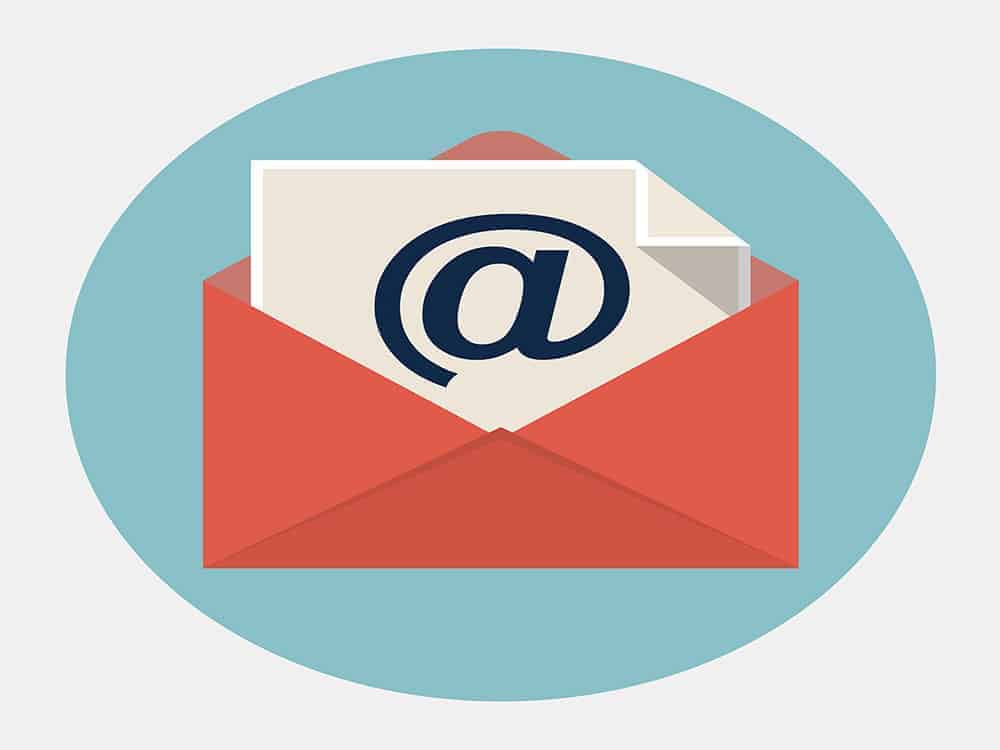Texting may be the most popular form of communication, but when it comes to business, email is king. It should be no surprise that there are more email accounts in the world than there are subscribers to Facebook and Twitter combined.
What makes email so popular? It is fast, easy, convenient, and delivers communication in real time. You can attach files such as scanned documents, images, and spreadsheets. Best of all, it is a free service!
However, there are rules that cover proper etiquette when crafting and sending email. These are not “hard rules” but guidelines to make sure your emails are effective and will get the job done.
1. Keep Your Email Short
People check their inbox multiple times per day. However, that does not mean they like checking their emails frequently. In business, time is a valuable commodity. Given the number of emails your recipient receives, he/she would prefer to filter through the inbox as fast as possible.
If your email is too long, chances are the recipient will only skim through it. He/she will not bother with the details and just look for its salient points to understand the context. Thus, it is better to keep your emails short and to the point.
Here are 4 great tips on how to compose a short but effective email:
- Start out by writing as much as you can then edit down the content upon review.
- Use bullet points to organize your content.
- Avoid prolonged introductions; after your salutation, state your objective right away.
- Focus only on one subject matter.
By staying concise, you highlight only the important details and reduce the risk of any misunderstanding with its recipient. Short emails are also a sign of courtesy. It shows you value the recipient’s time.
2. Review Before Clicking “Send”
While your email should be short, it does not mean it should be exempted from review. Before clicking “send”, take the time to review your email thoroughly. Doing so will prevent the following embarrassing situations:
- Sending out to the wrong recipient.
- Failure to include attachments after indicating in the email that files will be attached.
- Failure to put a subject matter.
- Failure to correct errors in spelling and grammar.
Have you ever written an email when you are in an emotional state? We sincerely hope you did not send it!
Composing an email when you are highly emotional can lead to sending regrettable content. Remember that once you click “send”, there is no getting it back.
Instead of sending the emotional email out, get a good night’s sleep. When you wake up, you will be well-rested and in a better state of mind. Once you review the email you composed the night before, you will be glad you did not send it.
3. “Reply All” Only When Needed
We often receive emails that include other addresses. Sometimes these addresses are indicated as “copy furnished”. Does that mean that your reply should include their addresses as well?
It is not necessary to send your reply to everyone included in the original email. The sender may have furnished a copy to the other addresses only as proof an email on the specific subject matter was sent to you. Those who were furnished a copy do not have to receive your reply.
For example, a landlord or property lessor may send an email to a tenant reminding him/her of unpaid accounts. The landlord may furnish a copy to the property owner, accounting, and credit and collection.
The tenant does not have to send his/her reply to everyone on the original email. He/she can just direct the reply to the landlord. This way, the tenant can add details that may only be pertinent to the duties and obligations of the landlord.
4. Use Good Email Subject Lines
The subject line is the first item the recipient will see. If you want your email to be opened you need to use a good subject line to compel the recipient to initiate action.
How do you write a good subject line? Follow our 3 helpful tips below:
- Keep the subject line to just one issue.
- Get to the point; what is your email about?
- Include a Call- To- Action; for example – “Urgent: Contract Signing – Please Update Your Records”
Using good subject lines will also help the recipient prioritize emails that need to be addressed right away.
5. Acknowledge Emails
For sure you’ve experienced not having your emails acknowledged by the recipient. You don’t know if they’ve read it or at the very least, seen it in their inbox. It’s not a very good feeling. It makes you feel that your email is unimportant.
It is common courtesy to acknowledge the receipt of an email. Even if you cannot respond to it right away, the sender should at least receive advice that you have read it and will attend to it as soon as your schedule allows.
Here is an example of a proper acknowledgement email:
“Hi Greg,
Thank you for your email.
I was able to go through it but not in detail. To give your email due courtesy, kindly afford me some time to digest the content and compose the appropriate response.
If you have not heard from me in 24 hours, please feel free to send me a response.
Thank you,
Bob”
6. Respond Promptly To Emails
As a matter of courtesy, you should respond to emails within 24 hours. This is especially true for emails that are urgent. If the emails are not particularly important, a response should be delivered within 72 hours.
24 hours is the ideal time-frame. It should give you enough time to compose the proper response. In some cases, you may need to do some research or verify information that the sender has requested.
If you need more time to put-together all the information the sender is asking for, indicate this in your acknowledgement email.
It is always advisable to take your time in composing your response. Do not respond if you are not sure of the information you are providing to the sender.
Should you respond to unimportant emails such as those sent by marketers? The answer is “Yes”. Unless you have signed up for their newsletter whereby you can merely unsubscribe, for other marketing content, it would be a good idea to send a short response.
For example, you received an email from a supplier who is offering the latest dialer program for your contact center business. The contact may have gotten your email from a friend, associate, social media, or your website.
If you are not interested, you can send the following email:
“Dear Mr. Smith,
Thank you for considering our company for your dialer program.
However, at this time, we have no need for your product. Rest assured that should our business require your services, we shall contact your office.
Best regards,
Dan Jones”
By responding to the sender, you are informing them that you no longer wish to receive communication from the company until further notice.
7. Inform Recipient Of Attachments
One of the key features of email is that you can include attachments. These could be documents or images that you urgently have to submit to the recipient. However, these files could be quite large. In some cases, you may have to send multiple files.
Before sending out an email with attachments, inform the recipient especially if these files can take up memory. The recipient may not have the storage capacity for it and prefer another way of receiving your files.
You could do one of the following options:
- Compress the files.
- Open a file in DropBox or another file-sharing platform and provide a link to the recipient.
Ask the recipient if he/she is fine by these options. It is possible that the recipient is not familiar with compressed files or DropBox and may prefer a simple attachment.
8. Check For Spelling And Grammatical Errors
We briefly touched on this in rule #2, “Review Before Clicking Send”. Errors in spelling and grammar in whatever form of content is inexcusable and unacceptable.
It will always leave a poor impression on the recipient. Emailed content may be short, concise, and sometimes, informal in structure but it still represents you and your business.
You can download a copy of Grammarly which can automatically check your content for errors in spelling, grammar, and quotation marks. It will also suggest alternative words to improve your content.
9. Use All Caps Judiciously
Whenever you see text presented in an “All Caps” format, don’t you feel like covering your ears? Using all caps for your email is tantamount to shouting at your recipient. It may not be taken lightly.
You can use all caps to emphasize a word or a phrase and to abbreviate names of companies, organizations, and people. There are other options to consider such as italics or by underlining the word or phrase. Using bold type font is also effective in emphasizing a word or a phrase.
10. Include Your Email Signature
Your email signature officially verifies the authenticity of the communication. Don’t assume it is enough that the email originated from your address. Email is just like regular mail only in electronic format. Would you end your letter without a signature?
Gmail has features that allow you to customize your email signature. It should include the following details:
- Professional Name
- Title or Designation
- Company Name
- Website URL
You can even use your official handwritten signature if your webmail provider supports a stylus pen.
The accepted location of your email location is at the left-hand side, right after your concluding text.
Conclusion
There are other rules that you should follow although these do not directly affect the recipient.
For example, always update your antivirus and anti-malware programs. Email is the preferred avenue of hackers to steal data or corrupt your system.
Look for security programs that can encrypt outgoing emails. SecureZIP for Windows, Virtru, and Vaporstream are among the most popular email encryption programs you can consider.
Businesses should have a domain email and avoid using generic webmail addresses such as “yahoo.com” or “gmail.com”. Having a domain email is more professional and shows you are truly invested in your business.
Come up with a professional email address. It does not have to be overly formal or complicated. For example, [email protected] is perfectly acceptable.
Lastly, it should go without saying, but some people tend to forward suspicious email like chain mail, unverified reports, and hoaxes. Spurious emails can be annoying to the recipient. It is a waste of inbox space, time, and could place the recipient at risk if it contains malware.
Do you have email etiquette tips that you want to share? Please feel free to share in the comments section below.
If you are also interested in starting an email marketing campaign, please do not hesitate to give us a call or an email.
We will respond within 24 hours!







